Lovecraft’s stories are certainly weird, but is the Folio Society’s edition of his works wonderful? Let’s find out…
Folio Society; 2017; liii, 417pp; 8to (255x180x45mm); 1.3kg; bound in green and purple cloth; in purple slipcase with printed design; black and white illustrations throughout.
The 19th century had seen a blossoming of horror fiction built upon strong Gothic undertones rooted in folklore. H. P. Lovecraft was among the pioneers of a new (sub)-genre known as Weird fiction, which eschewed these traditional elements in favour of newly imagined terrors and an increasing focus on occult esoterica and the tension between science and the supernatural—ideas that had become popular over the preceding hundred years. This transition put a new emphasis on world-building as an important part of the horror storytelling process and the Cthulhu Mythos that Lovecraft invented to underpin the world of many of his stories has an enduring legacy in modern culture.
Wikipedia lists 69 works of fiction by Lovecraft, published between 1917 and 1959 (22 years after the author’s death). This 2017 edition, published by The Folio Society, collects eighteen stories into a single volume. In doing so, it follows the 1999 Penguin Classics edition of the same title, which was the first to publish the stories in this combination.





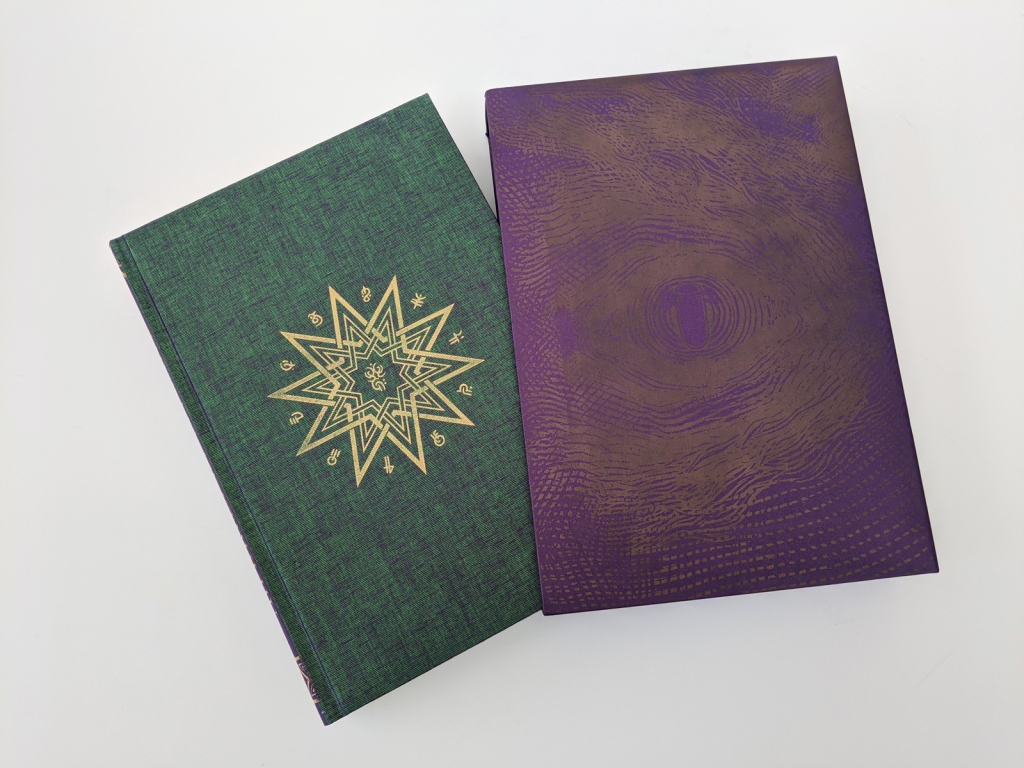
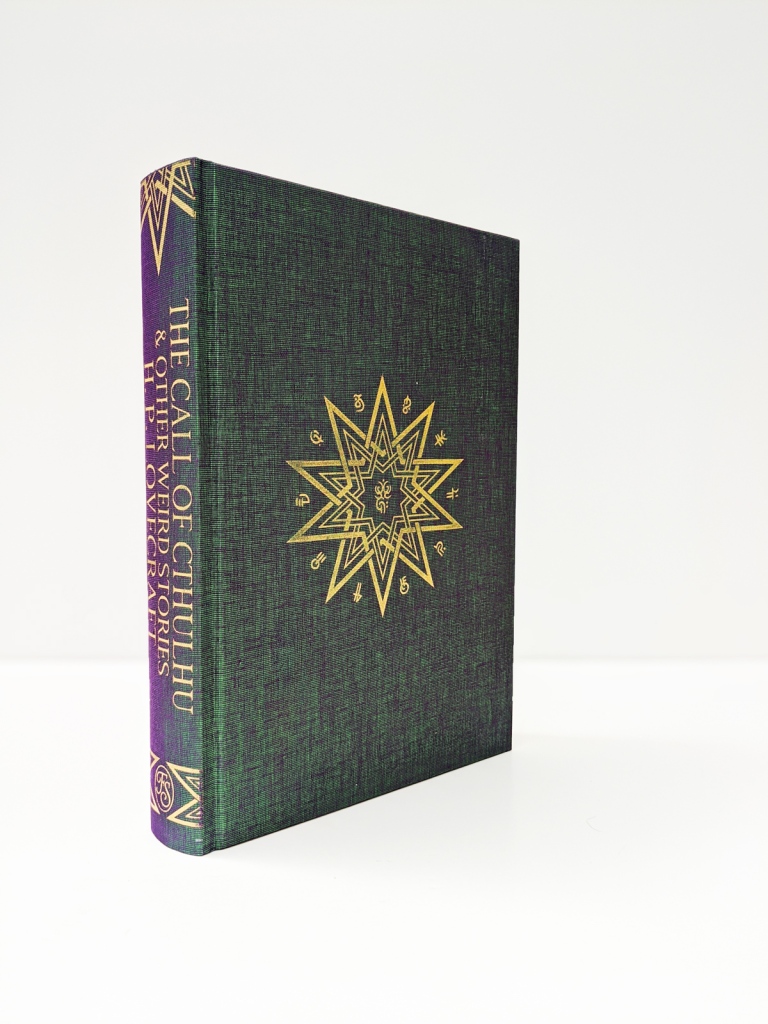
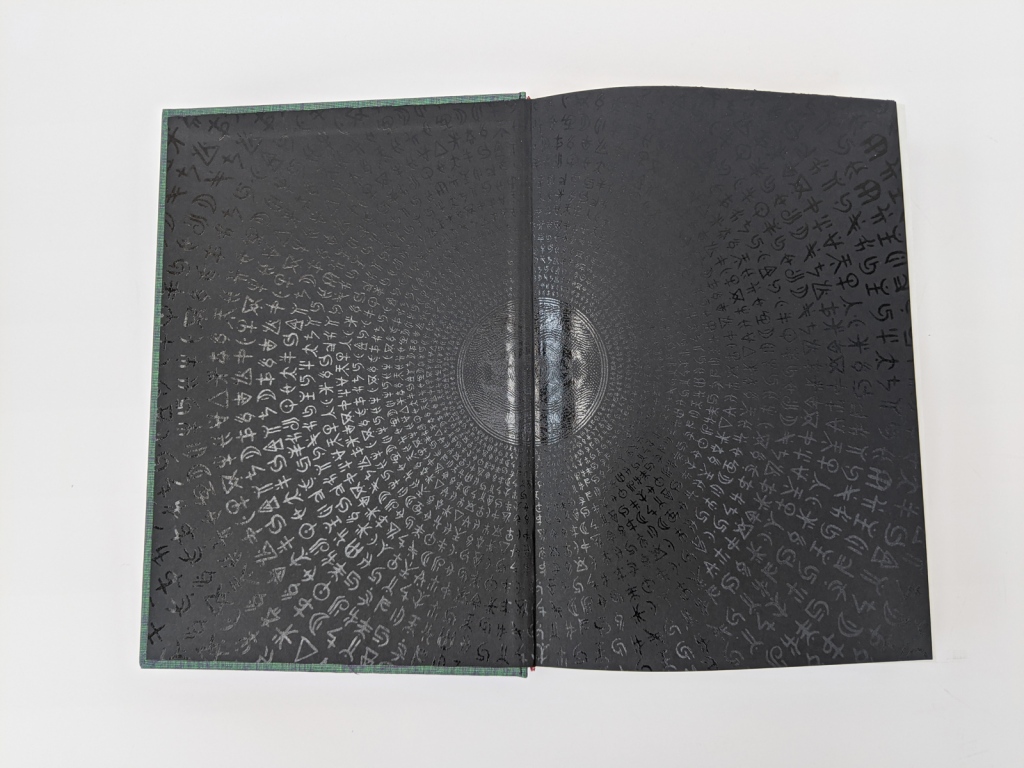
The physical production
The book is bound in the most captivating pearlescent cloth, whose fibres change colour from turquoise to purple depending on your angle of view. I couldn’t help but think of Lovecraft’s tale The Colour Out of Space when looking at this cover. This striking material contrasts nicely with the golden printed motif on the cover and titling on the spine to make this one of my favourite Folio Society editions from a production point of view. The text block is sewn with red head and tail bands, and the top of the block is gilded. End papers are black with spot varnished runic style symbols. Overall, the production is top notch and worthy of the book’s positioning among Folio Society’s slightly more expensive “fine” editions. The volume comes in a purple slipcase printed with a gold design in the form of an eye.

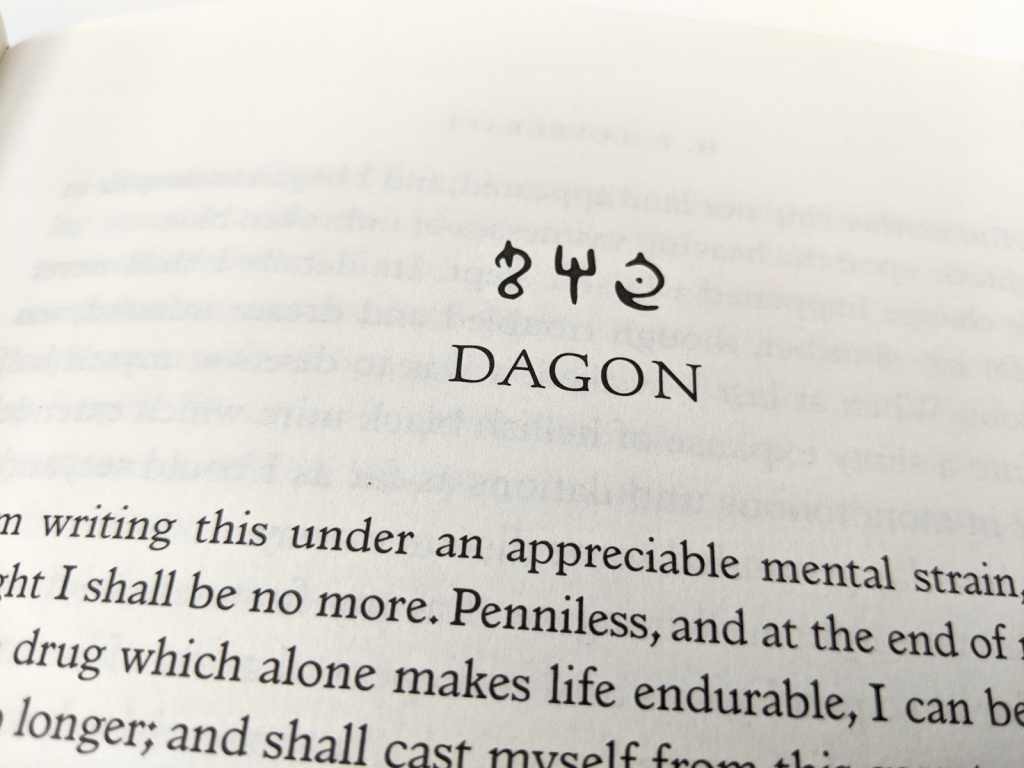


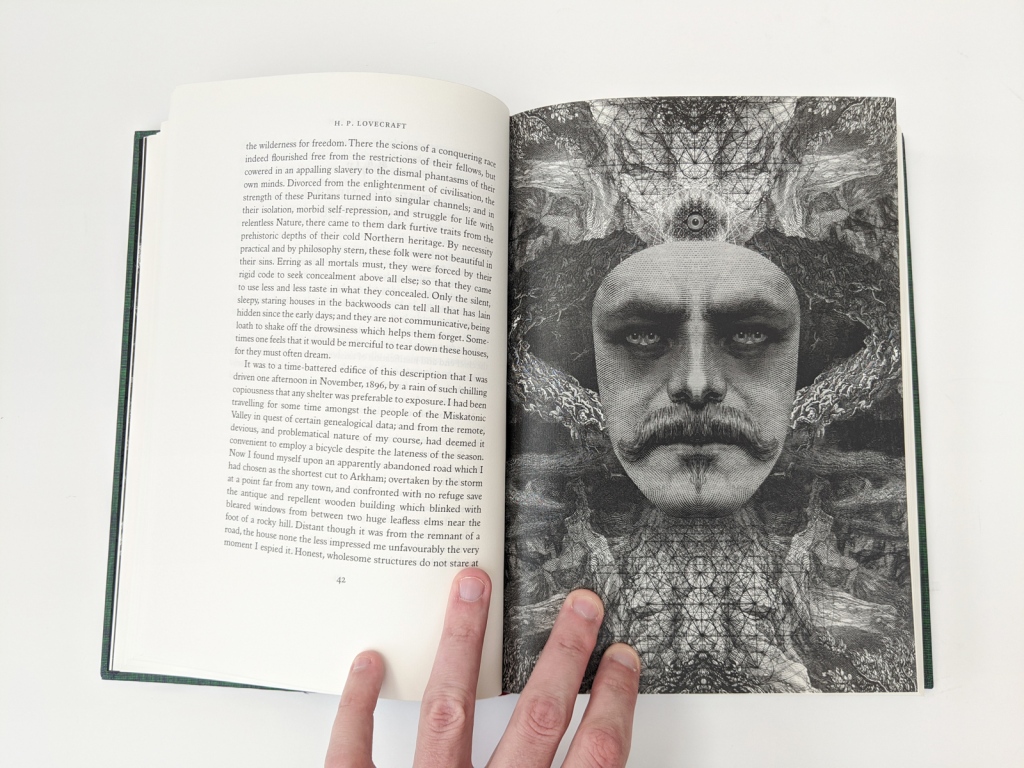



Inside the book
Inside, in common with most recent editions, we find that the Folio Society has used Abbey Wove paper. This is slightly off-white and matte but smooth. Opacity is okay, but not exceptional (I didn’t find this to be a distraction while reading). Text is set in Italian Old Style with Goudy Forum display. Above the title of each story is a collection of the same kind of runic symbols found on the end papers. The printing and binding took place in Italy.
The editor, S. T. Joshi, provides some helpful introductory notes on each story (collected together at the front of the book) that offer some helpful context and detail the stories’ publication histories. This is complemented with a general introduction by Alan Moore.
The book is illustrated by Dan Hillier. Hillier’s style is quite distinctive and will not appeal to all readers, but I thought the illustrations here were a good fit for the book. Besides the title page / frontispiece, there are six illustrations, two of which span a double page. Each is black and white and has something of the appearance of a Victorian-era engraving. Symmetry seems to be a big part of the work, lending a slightly unnatural quality to human faces, and most of the drawings have a distinctly demonic quality about them.
The eighteen stories included in this volume are:
- Dagon, The Statement of Randolph Carter, Facts Concerning the Late Arthur Jermyn and His Family, Celephaïs, Nyarlathotep, The Picture in the House, The Outsider, Herbert West—Reanimator, The Hound, The Rats in the Walls, The Festival, He, Cool Air, The Call of Cthulhu, The Colour Out of Space, The Whisperer in Darkness, The Shadow Over Innsmouth, and The Haunter of the Dark.
Lovecraft never found widespread recognition during his lifetime and his works were primarily published in pulp weird fiction magazines rather than in more serious book form. Given this inauspicious start, there is a remarkable consistency to the quality of the stories presented here. Of course, I have my favourites (The Picture in the House, Cool Air, The Colour Out of Space, and The Shadow Over Innsmouth would be my top picks), but there are no particularly bad stories here. It’s always a little painful to encounter an artist who never lived to see the recognition they deserved.
Where to buy
As of June 2022, this book is back in print and can be bought direct from The Folio Society.
* denotes an affiliate link
Brief remarks on the limited edition
In parallel with this volume, the Folio Society published another edition with a limitation of 750 copies. Although the contents were the same, the limited edition had a black (simulated) leather binding, came in a box rather than a slipcase, had vibrant marbled end papers, and was accompanied by a print signed by the artist. The presentation box for the limited edition looked very similar to the binding of the fine edition book (sharing the same turquoise-purple cloth covering). The retail price of the limited edition was £345.00. ■



4 thoughts on “The Call of Cthulhu & Other Weird Stories by H. P. Lovecraft (Folio Society, 2017)”